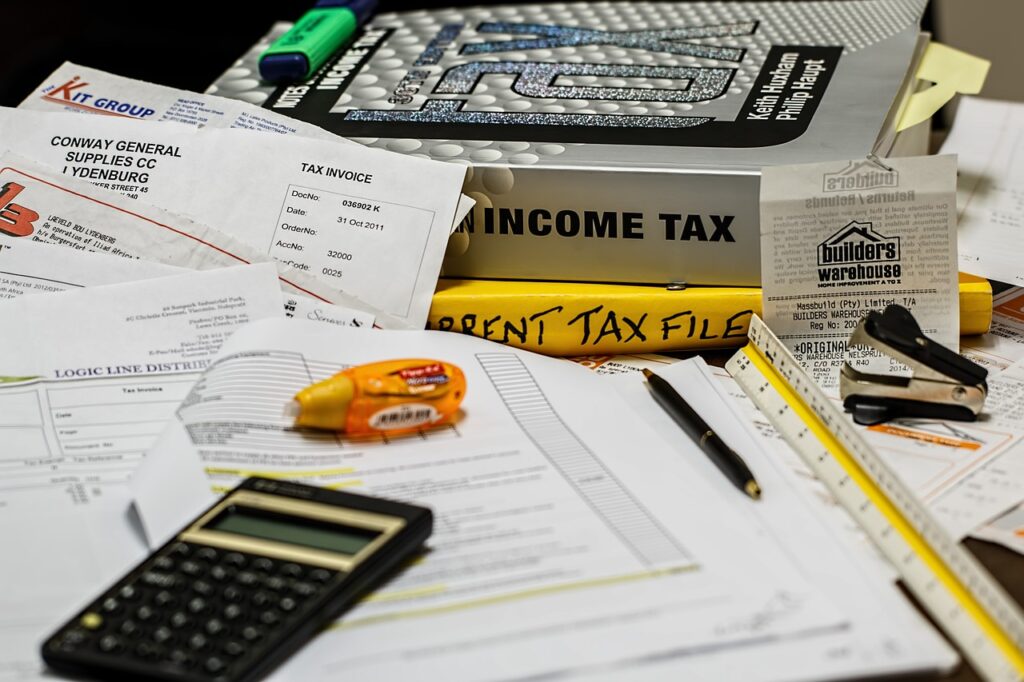Introduction
We’re getting increasingly distracted at work in a world of push notifications, email, instant chatting, and condensing office space. The idea that you can efficiently complete multiple tasks simultaneously continues to be disproven by study, which could be better news for the self-described multitasker. Experts said that the human brain was not intended to work this way. Focusing on two things at once makes you more stressed and less productive. The fact is, we all experience distractions at work daily. It’s a basic fact that distractions occur at work every single day for everyone. They usually happen every hour. It can feel like a great effort to be productive and get the important things done with so many meetings to attend, talks or drop-ins by coworkers, calls, emails, social alerts, and numerous other interruptions.
Common Office Distractions
Distractions are common in the modern office, whether you work from home, at your favourite coffee shop, or in a busy office. Distractions at work have a detrimental impact on potential, productivity, and performance. According to a study, interruptions at work increase tension and frustration, and even short breaks trigger an employee’s error rate. In summary, persistent interruptions can be bad for a person’s health and affect the quality of their job. Determining what is distracting your team is the first step in eliminating distractions. A strategy to eliminate these interruptions might be aided by understanding the distraction and how it occurs.
1. Noise
An open workplace layout may be the most effective way for your company to promote cooperation, spark creative thinking, and downplay hierarchy. There has been some opposition to the spread of these types of offices because they frequently contribute to noise and need more privacy in a close cubicle. While there are advantages to tearing down the cubicle barriers, open workspaces may also be a filthy, noisy environment. The open workplace is ideal for tasks requiring lots of interaction and teamwork but could be better for focused work. According to studies, open workplaces are detrimental to some sorts of work in terms of attention spans, creativity, and productivity.
2. Smartphones
People using cell phones get overwhelmed with emails, messages, social media notifications, and phone calls throughout the day. In addition, individuals use their phones to listen to podcasts, go shopping, consult their calendars, and set reminders. It makes sense why people are addicted to it. It’s difficult, but not impossible, to break your smartphone addiction. Use your phone’s “do not disturb” feature or put it on aeroplane mode as a tried-and-true solution. Your phone can also be left in another room, a desk drawer, a bag, or a handbag. Reducing “during work hours usage” can also be accomplished by scheduling times throughout the day.
3. Talkative Colleagues
It’s crucial to establish ties with your team and fellow employees. Daily talks create a welcoming, cooperative culture and mood at work. Yet, it’s simple to be sucked into gossip and endless convos. If your door is always open, it’s pretty simple for someone to pop in and ask you a question, which keeps you from working effectively.
4. Hunger
There are only so many factors that have more of an impact on performance than nutrition. Nutrition is essential for maintaining focus and cognition, especially at work. Most people are unaware that brain cells need twice as much energy as other body cells. In other words, sustainable energy is required for your brain to function at its best. Candy bars and danishes, two common examples of sugary vending machine fare, cause energy spikes and crashes that hinder our capacity for sustained concentration and worsen the issue.
5. Meetings
A manager or leader does not want to spend an hour or more in a worthless meeting during a busy week. Meetings currently occupy more work hours than ever before, so the most efficient method to be inefficient would be “bad meetings.” The majority of employees attend 62 meetings per month, but only some of them are deemed unnecessary. For a typical month, unproductive meetings last 31 hours, during which 91% of employees admit to daydreaming and 39% report dozing off.
Managing Office Distractions
When you know the effects of distracted workers, you may implement policies and procedures to help solve the issue. However, employers are not required to take extreme precautions. Encouragement of workers to take a quick break can be successful. According to experts, encouraging employees to take regular breaks is one of the best ways to foster a productive culture in the workplace. Taking breaks from your work throughout the day might increase productivity by allowing your mind to switch gears and reenergize. Finding suitable activities that boost energy rather than sap it is the trick.
1. Stay away from technology distractions
The distinction between personal and professional communication has become more hazy thanks to our cell phones and other too-good-to-be-true gadgets. Today, we may access private Facebook comments, Instagram images, and a variety of other personal information on the same device where we receive professional emails and phone calls. Policies to limit their use at work are rarely successful due to the addictive nature of such technology and the difficulty of enforcing restrictions on what workers can view on their devices. Individuals who comprehend and handle the difficulty themselves typically find it more beneficial. To help you concentrate on a specific task, for instance, you and your coworkers could decide to put your phones away for a set period each day.
2. Make your workspace a no-lazy zone
You can keep your brain busy by clearing your workspace of anything that can distract you. For instance, taking frequent snack breaks causes you to lose concentration while working. A cookie container nearby will tempt you to take a snack break and might even bring a coworker along without your consent. You won’t frequently visit the pantry if you keep your snacks there. Therefore, make sure nothing in your workspace will make you impatient.
3. Settle in
Distractions may be less frequent when you are relaxed and comfortable while working. The degree of comfort you can get may vary depending on where you work. If you work from home, you can set the temperature to your preference and wear comfortable clothing all day. If you work in an office environment, you can bring in items that help you feel comfortable, such as an oil diffuser or a lamp with sufficient lighting.
4. Establish a focus period
A well-liked time management approach called “time blocking” enables you to devote a portion of your working day to just one chore. Set out time slots in your schedule that are only for working on projects with a high priority to make the most of your focus time. Depending on the responsibilities of your day, this can take just 30 minutes or a few hours. Close your email, put your phone on silent, and tell your coworkers that you should not be disturbed during this time. Your calendar should be blocked during that period and marked as “busy” to prevent you from being called into meetings without your consent.
5. Organize your space and your thoughts
A clear mind and a clutter-free environment are necessary for optimal productivity. It’s much simpler to focus on the job when your desk is organized, and your thoughts are in order. While a messy desk might result in a crowded head and numerous distractions, a bland, dull workspace can harm your mood and kill your productivity. You may set yourself up for productive days and inspire yourself to accomplish your best work by striking a balance and creating a fun, professional, and enjoyable work environment.
Keep a notebook close at hand to prevent daydreaming. When you think about something unrelated to the activity, such as what you should include on your grocery list or what would make a wonderful gift for a coworker, jot it down and return your focus to the task immediately. If that’s more practical, you can use simple paper notebooks or employ digital tools to hold your notes.
6. Organize Your Tasks
A great way to prevent self-interruptions is to batch tasks. You can complete more work without unnecessary distractions. Since it takes more than 20 minutes to refocus after a distraction, switching back and forth between tasks lowers your productivity in half. Whether you must write emails, edit videos, or make cold calls, put related tasks together and complete them all at once if they are on your to-do list. Select a period during the day when you can make all the essential calls at once or deal with many consumer enquiries. Your daily concentration time should grow, and context disruptions should be reduced.
7. Learn to communicate asynchronously
Asynchronous communication benefits people by expanding the time they must respond to a request, in addition to giving people more uninterrupted time to concentrate on a task at hand. Making judgments in real-time when on a phone conversation or video chat differs from speaking via email, where you have more time to consider your response. We must eliminate the arbitrary “urgency” culture that still permeates workplaces because you must distinguish between what is urgent and vital to practice this successfully. Note that most of the time, the important are never urgent, and the urgent are never necessary.
8. Be able to say no
People may fail to notice your busy attitude or do not care if you’re busy if they need something from you. Setting limits early on will teach them not to interfere with your job, whether it’s a young child who wants your attention or a colleague who must check some code. Everyone needs to understand that you can’t be available at a moment’s notice so that you can get through the day with the least amount of interruption. Teach others to value and respect your time and labour. If they need you, let them know when you are available for encounters. It’s acceptable to decline anything that might prevent you from completing your assignment effectively.
9. Create an autoresponder
When dealing with interruptions, an autoresponder can save the day. You can configure your email to automatically reply to incoming messages, informing them that you are busy and when you will be ready to respond. By doing so, you won’t feel pressured to check and reply to emails continuously and can remain concentrated on your task. An autoresponder is typically relatively easy to set up. You may easily set up an automatic reply by going to your email settings and searching for that option. Customize your message to include an expected response time, and presto! You’ll be able to complete your task in peace while informing everyone.
10. Reward yourself
Delaying gratification occasionally encourages people to work more quickly. This can be accomplished by selecting a treat to enjoy after achieving your day’s primary objective. Consider a method that will encourage you to finish your task so that you may take advantage of your reward, whether it is placing an order for your favourite lunch, allowing yourself a 30-minute break to watch TV, or enabling yourself to use your phone.
Conclusion
Every day, distractions affect us all. They make us less productive and make us more stressed. When you consider the things that distract you the most while working, technology is near the top of the list. Try forming new routines to assist you in managing your distractions. Limit your time on social media and carefully monitor how much you use your phone, messaging, and email. Make it known to others when you don’t want to be bothered or leave distracting areas to locate a peaceful workplace. Make sure your To-Do Lists are manageable and concise. You and your team members should be able to do more after implementing these steps.
Businesses that foster a culture of avoiding interruptions will reap the benefits of a focused workforce over time and fewer stressed and ultimately happier employees. Being efficient at work depends on solid time management skills, especially on your schedule. Don’t hold other variables responsible for your distractions or disrupting your workflow. Instead, set up your procedures so that you can minimize the number of unwelcome interruptions. Don’t let anyone or anything squander your time; stick to your goals and take control of it.



